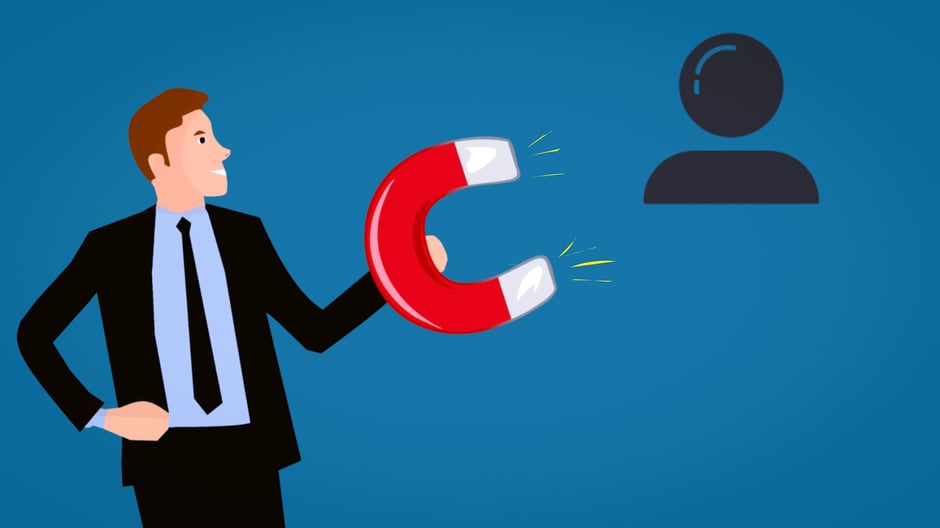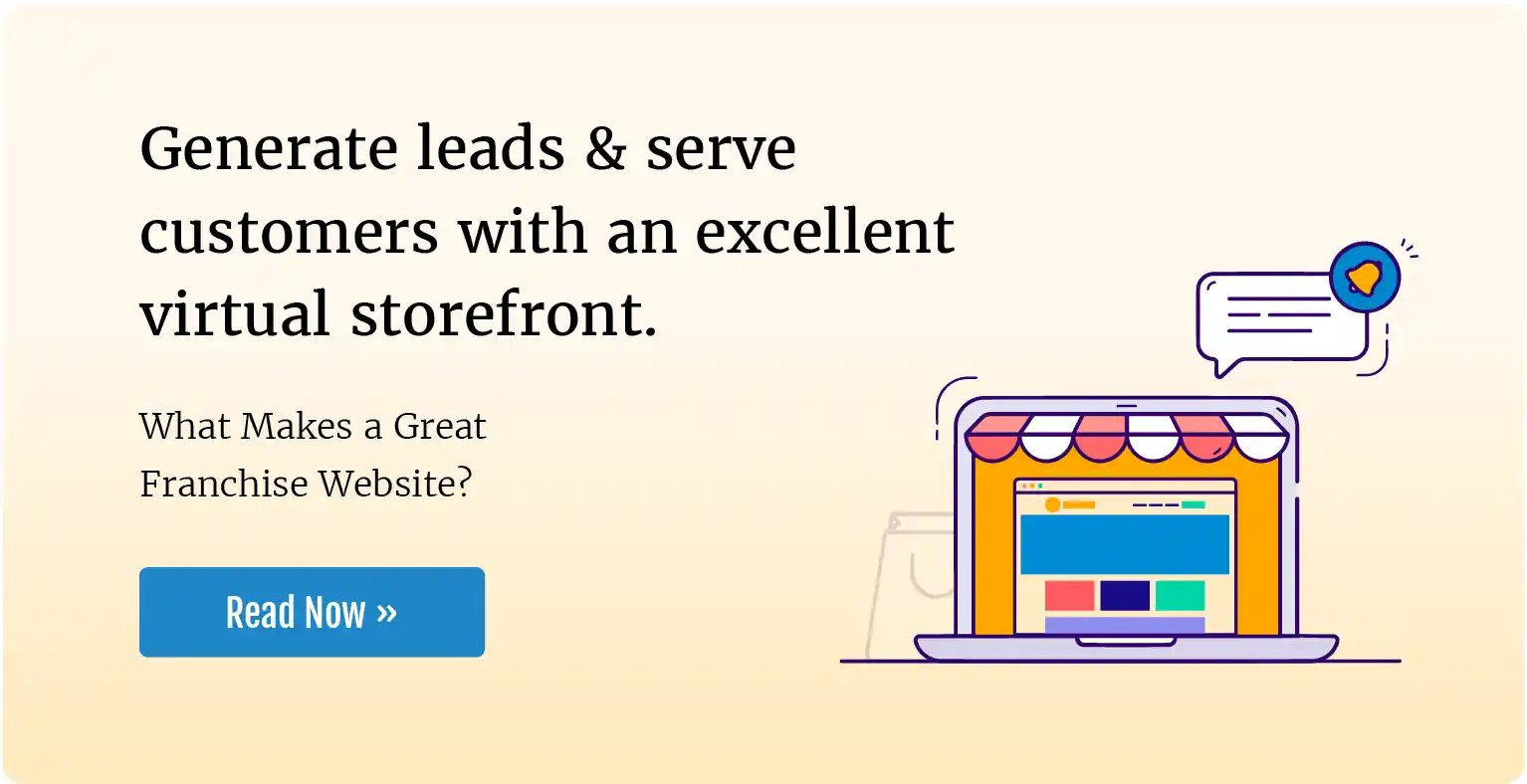How can you make sure your franchise website is ready for inbound marketing?
Often, franchisors believe they can unleash new marketing tactics on their existing site and achieve optimal inbound marketing success.
This doesn't always work.
Why?
Because for inbound marketing to work best, you need to take a holistic approach.
If your website is too slow, for example, people may leave before they have a chance to read your inbound content.
If you website is not secured with an SSL certificate, visitors may hesitate to submit forms on your landing pages.
This post provides a short checklist to ensure your franchise website is truly inbound-ready.
1. Smart structure
Smart, simple navigation is crucial for an inbound-ready website.
Establishing a logical flow between pages and ensuring visitors can get anywhere on your site in three clicks or less helps people find what they’re looking for, keeping them on your site.
Planning your website layout is worth the time. Do some research to see how visitors currently interact with your site and make adjustments based on those findings as needed.
Another consideration many franchisors forget about: when you're implementing inbound marketing, your goal is for visitors to find pages through search that aren't necessarily your homepage.
Ensuring your navigation bar clearly lays out who you are and where visitors can go next helps them have a positive experience.
2. Clear content formatting
Because people read differently online than they do on paper, copy that lives on the web must be formatted for digital readability.
With the increase in mobile use, it's best to format your pages so that important information stands out as people scroll and skim.
Here are a few tips for writing copy visitors will read:
- Write short paragraphs
- Use bullet points whenever possible
- Use eye-catching titles and headers
- Tell your reader what to do once they’re done reading (e.g. "check out this whitepaper").
3. Clever design
Design makes a big difference in how a user interacts with your site, including taking conversion actions.
Make sure your site design:
- Provides a great user experience
- Uses lots of white space (space between elements)
- Includes attractive, compressed images
- Draws the users' eye to clear next actions
- Includes social proof (outside validation of your business like testimonials, client logos, and accreditations)
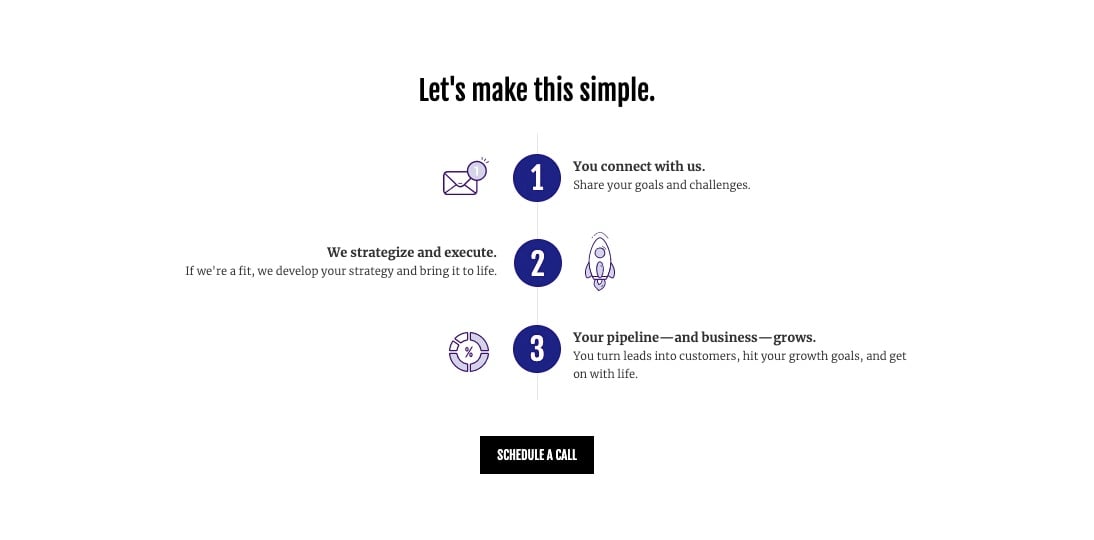
4. Targeted keyword optimization
Keyword optimization is a crucial aspect of an inbound-ready site.
Make sure to optimize website copy and meta-information (titles, subtitles, descriptions, and images) with keywords that are directly relevant to your products, services, franchise offering, or whatever your research shows your ideal buyer is looking for in search engines.
The key here is balance—too many keywords and you’ll turn off human readers and get punished by search engines, but too few and you won’t rank for anything.
Read how we helped a franchise client with keyword targeting.
5. Speedy load time
Pack your site with dozens of plug-ins or affiliate ads and your website will drag—guaranteed.
Years ago, digital marketing expert Rand Fishkin reduced the page load time of his site by just 1.5 seconds and found an increase greater than 100% in the amount of total pages crawled by Google each day.
Today, the rule of thumb is that your site should load in 3 seconds or less. The faster your site loads, the less likely visitors are to leave after viewing only one page.
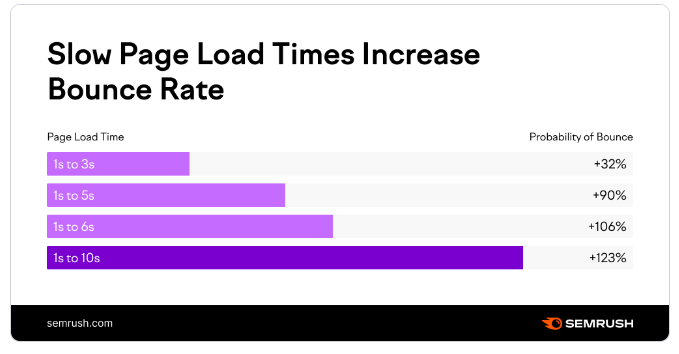
6. Compelling calls to action
Another crucial aspect of an inbound-ready site is clear calls-to-action on each page.
You want to make sure your visitors know what to do next. The more time they spend on your site, the better chance you have of building their trust and converting them into a lead.

Next actions that target those ready to get a quote after watching the homepage video; Source: A-1 Concrete Leveling
Eye-catching call-to-action graphics lead prospects to targeted landing pages. Place calls to action in the sidebar of your blog page, internal pages, or in hero slider images on your homepage.
Another important aspect of calls-to-action: ensure the next step makes sense for the page your visitor is reading.
Don't make the jump from a post for people who've just begun to think about purchasing a franchise to your contact page.
Instead, send them to a guide that will help them enter the next stage of their research.
7. Focused landing pages
A landing page with a compelling offer, clear copy, and a frictionless form will convert visitors to leads with little effort, as long as you're delivering the right visitors to these landing pages (see the tip above about CTAs).
Keys to building a targeted landing page include:
- Removing the navigation bar (so viewers focus on the offer rather than leaving)
- Describing the value of the offer
- Providing a short contact form that won’t turn visitors away
8. Invaluable premium content
To get visitors to submit their contact information, your offers (case study, quote request, etc.) must demonstrate value to your prospects.
Go the distance with great design work, clear copy, and information that your visitors can’t get anywhere else.
9. Branded email template
The best part about sending follow-up emails to those who have claimed your offers? They’ve opted in to receive them, which means they’re more interested in what you have to say.
Use a branded email template to help recipients quickly make the connection between your message and your website and branding.
10. Automation
Automation can help you strike while the iron's hot and streamline sales activities. A follow-up email like the one described above is a prime use case.
You can set up workflows to trigger follow up emails to be sent when a prospect takes an action, like downloading a high-buying-intent white paper, and also send a notification to a salesperson. (HubSpot).
11. Analytics and user experience software
Install analytics software on your site to track the anonymized behavior of visitors to your site, such as which pages they viewed and forms they submitted. This helps you keep track of popular pages and conversions, and uncover technical problems.
Google Analytics is industry leading software you can use for free, which you can supplement with paid tools like HubSpot and Hotjar. HubSpot allows you to track the actions of specific individuals in your contacts database, rather than just anonymous users.
Meanwhile, tools like Hotjar help you uncover problems with your website that could be scaring leads away. Learn how to roll out the red carpet for leads and customers →
Next identify specific metrics that can help you measure progress toward your marketing goals (key performance indicators). This enables you to demonstrate the results of your marketing campaigns to executives who control the pursestrings and track what is, isn't, and has worked.
Read more about franchise KPIs and which to track →
12. A/B testing capabilities
A/B tests (also called "split tests") are when you serve half your audience one version of an email, web page, or ad, and the other half a variant, often with one key difference. Then, you use whichever version works better all the time.
The classic example is two calls to action—one red, and the other orange. Half the people who see the call to action button get the red version, the other half, the orange. After a set period of time, the marketers discover that the orange button got more clicks, so they choose that for the final design.
A/B testing is an essential tool in your belt for conversion optimization, and a number of software platforms offer it. HubSpot, for example, allows you to test emails, website components, site pages, landing pages, and CTAs.
13. Live chat messengers and chatbots
Sometimes, AI chatbots and live chat messengers that enable customers to directly ask a business questions can help remove friction on pages with a high conversion rate (HubSpot).
Chatbots can be programmed to provide resources, troubleshoot, directly answer questions, and connect visitors with a living person, depending on their level of sophistication.
Live chat messengers, on the other hand, allow a prospect to directly reach out to an on-call representative at a critical moment.
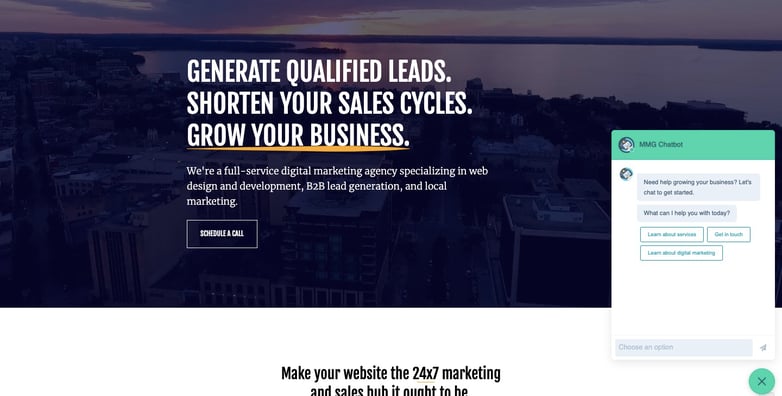
Our chatbot
Conclusion
Follow these tips and you’ll be on your way to an outstanding, inbound-ready franchise site that helps you optimize your investment in digital marketing.
Topics: Franchise Marketing, Website Optimization
Chris Murvine, CEO
Chris Murvine has worked in the digital marketing industry for over 20 years, developing expertise in technical-marketing strategies and growth-platform implementations. He founded Madison Marketing in 2008. Outside of the office, he enjoys spending time with family, camping, and riding all-terrain vehicles.

